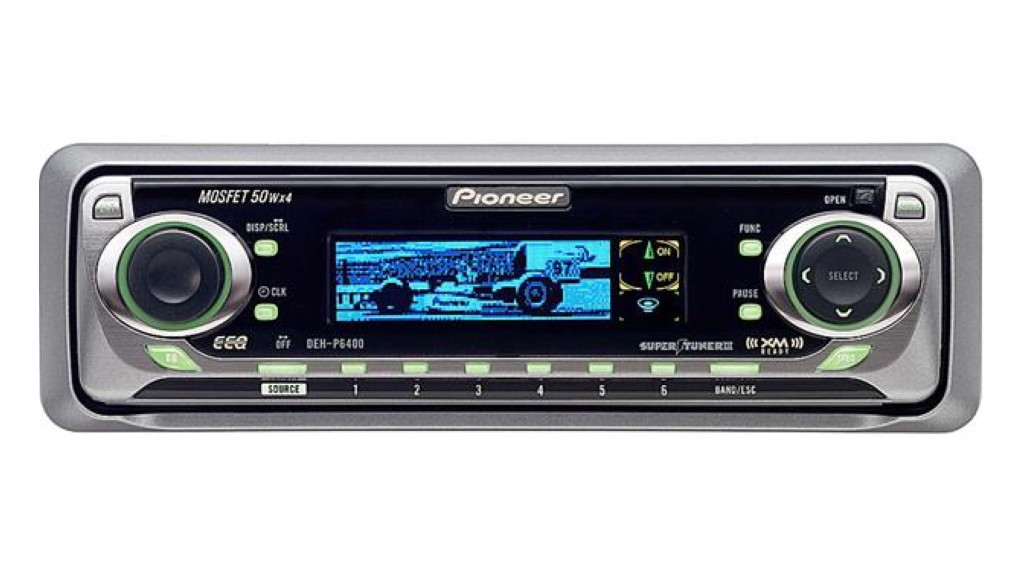The early 2000s were a unique era for car audio. In a rush to embrace the future, many aftermarket head units adopted a maximalist design philosophy. Shiny plastics and a barrage of blinking lights became the norm, all in the name of futuristic aesthetics. As the new millennium dawned, sleek electronics were the trend, and every brand wanted a piece of the action.
While companies like Kenwood and Alpine competed to see just how much information they could squeeze onto their LCD displays, Pioneer took a different and arguably more innovative route. They championed organic electroluminescence, or Organic EL, displays. Pioneer’s marketing boldly claimed these new displays were a staggering 1,000 times faster than traditional LCDs. And what better way to showcase this cutting-edge technology than with eye-catching animations? This is where the magic of the “Pioneer Dolphin Radio” began.
The turn of the millennium was a time of technological experimentation, where entertainment tech tried to do everything at once. Windows users enjoyed the mesmerizing pipes screensaver, WinAmp boasted countless customizable skins, and Pioneer head units with Organic EL displays brought their own visual spectacles to the dashboard. While early models were still exploring the possibilities, the Organic EL display truly hit its stride in units like the iconic DEH-P6400 head unit of 2002 – the “pioneer dolphin radio” that captured the hearts (and dashboards) of many.
Imagine driving down the road and catching a glimpse of dolphins swimming in your dashboard. Normally, seeing dolphins while driving would suggest an impending insurance claim involving a body of water where it shouldn’t be. However, Pioneer playfully incorporated an animation of a person swimming with dolphins into each DEH-P6400 head unit. This whimsical feature, while seemingly unconventional, became an unexpected status symbol. Sure, the display resolution might have been comparable to a Nokia 3210 phone screen, but in the early 2000s, having dolphins swimming in your dash, paired with booming subwoofers in the trunk, was the ultimate statement. The “pioneer dolphin radio” wasn’t just about sound; it was about visual flair.
Beyond the famous dolphin animation that defined the “pioneer dolphin radio,” the DEH-P6400 offered a variety of other animations. Alongside grainy level meters and hypnotic pipe-style visuals, Pioneer also included race car animations. Pioneer’s sponsorship of Indycar drivers, including Alex Zanardi, made animating open-wheel race cars a fitting way to highlight their corporate partnerships. The Indycar animation was impressively detailed, featuring a moving engine cutaway, a driver’s perspective shot, and a realistic racetrack setting. It was a significant upgrade in visual appeal compared to the more cyber-themed Indycar animation found in the preceding DEH-P6300 model.
 Pioneer DEH-P6400 Displaying Dolphin and Indycar Animations
Pioneer DEH-P6400 Displaying Dolphin and Indycar Animations
Photo credit: Pioneer
Animations aside, the DEH-P6400 “pioneer dolphin radio” was a capable and well-featured head unit for its time. It offered preparation for a 3.5mm auxiliary input, a crucial feature as portable music players were gaining popularity, and it was also XM satellite radio ready, tapping into the expanding world of digital radio. With an RMS power output of 22 watts, as noted by Crutchfield, the DEH-P6400 provided decent sound for everyday listening. Its RMS bandwidth extended down to a reasonable 50Hz for the era. For those seeking more powerful audio, four pre-amp output jacks allowed for connection to external amplifiers and more elaborate car audio systems. The inclusion of CD changer control was also vital for seamless music library management, allowing drivers to switch from Limp Bizkit to Ja Rule playlists on the fly.
Pioneer also released multi-color Organic EL displays in their higher-end MEH-P9000 and DEH-P9000 models, offering blue, green, yellow, and orange illumination options. However, these premium units never achieved the widespread popularity of the DEH-P6400 “pioneer dolphin radio.” Even today, the DEH-P6400 is remembered with the same fondness as 2000s cultural icons like Dunkaroos snacks and the Midnight Club 3: Dub Edition video game. While its shiny silver faceplate and relatively low-resolution display clearly place it in the early 2000s, the DEH-P6400 remains the perfect era-correct head unit to complete a nostalgic 2000s-style build of cars like a Toyota Matrix XRS or Nissan Sentra SE-R. As 2000s car culture continues to gain appreciation, the “pioneer dolphin radio” and its playful animation are poised to become sought-after relics of a unique automotive era.
Lead photo credit: Pioneer/Boosted 2000
